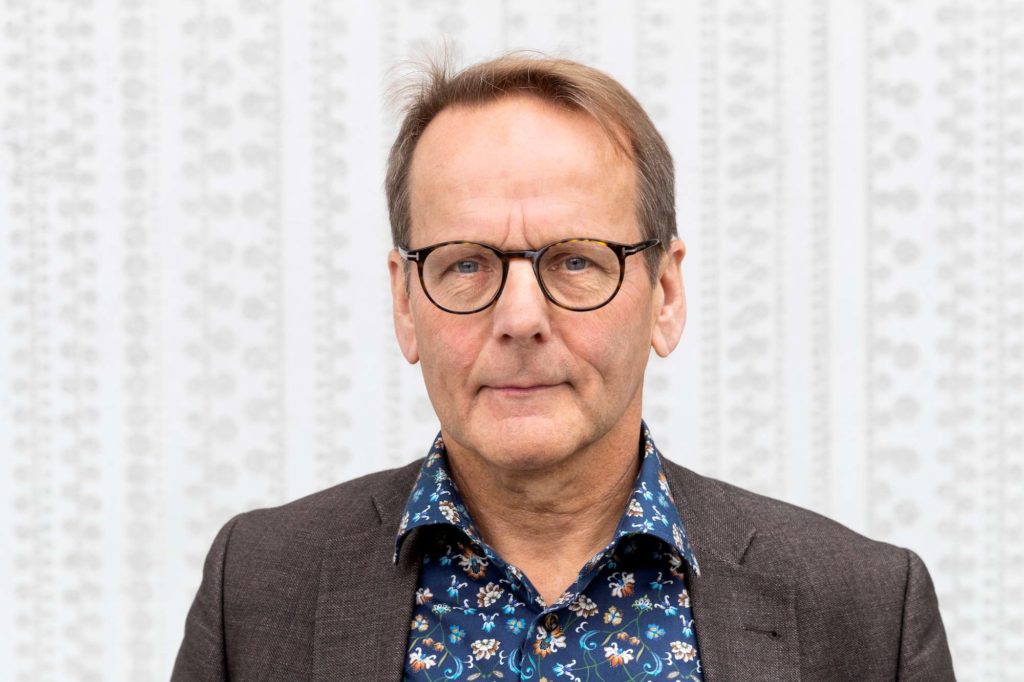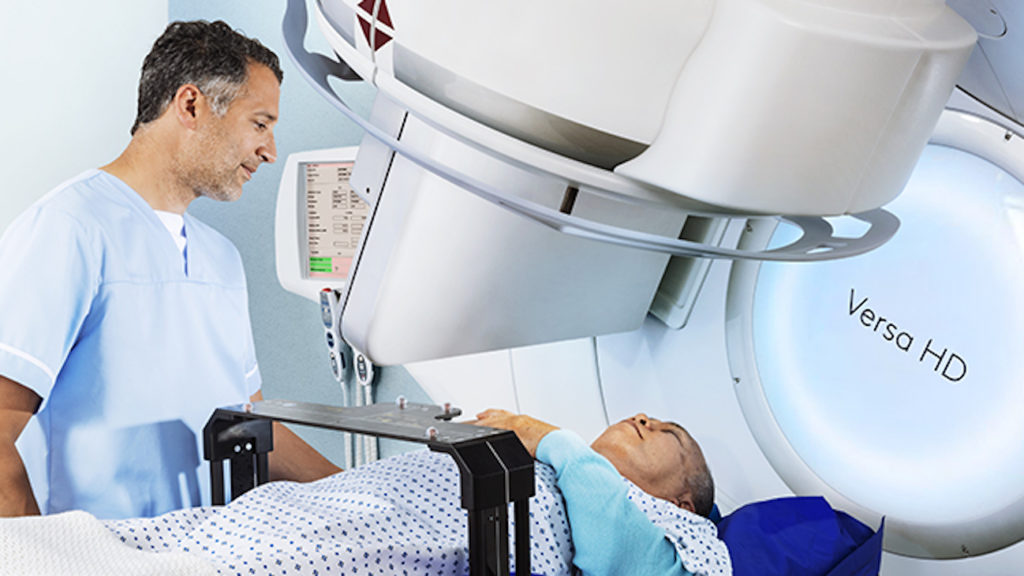More and more patients need radiotherapy. But radiation therapy treatment is an area where research in Sweden has gone from leading to lagging behind internationally. How do we reverse the trend? How do we ensure that radiation therapy research continues to develop and become even better so that more patients survive and can live a better life with less side effects?

Sweden was for a long time a leader in the field of radiation therapy research. But in the last 20 years we have been falling behind – fever scientific articles are published, less money goes towards research and people who hold it as an occupation are getting more scarce. Kjell Bergfeldt, MD, PhD, with more than twenty years of experience as an oncologist has the task of developing Swedish radiation therapy and is working to change all of this.
– Half of all cancer patients are estimated to receive radiotherapy at some point during their illness. Developed radiation therapy can improve the lives of many people.
Innovations such as the MRI camera and PET scanning have made the images sharper and more detailed. Treatment planning programmes have been developed to make radiation therapy more precise. Dr Bergfeldt sees it as a form of precision therapy where artificial intelligence and machine learning can help improve treatment further.
– In the past, we had to include space for uncertainty in the planning which meant that the volumes that were irradiated could become large and cause severe side effects. With better images and software, we have improved radiation therapy treatment and there are great opportunities to improve it further. If we can isolate the area of the tumor better, it may be possible to increase the dose. As long as there is a risk of hitting healthy organs, we want to keep the dose down.
– Half of all cancer patients are estimated to receive radiotherapy at some point during their illness. Developed radiation therapy can improve the lives of many people.
For lung cancer there is a particular challenge.
– The brain is located in an exact place. The part that the radiation is aimed to hit is still. But the lungs move with your breathing. Therefore, the tumor is moving. How do you beam on a moving organ? The technology to do so has evolved rapidly but yet it is not fully implemented everywhere.
The fact that the technology has become more advanced has also made the management of it more complicated within healthcare. This leaves one more thing that must be developed. Competence.
– The number of patients receiving radiation treatment is constantly increasing. However, the number of nurses and doctors who can master the increasingly complex technology and who are doing research in the field is not increasing at the same rate. In order to provide the best treatment, we need to attract more doctors, nurses and medical physicists who are focused on radiation therapy.
After all, Dr Bergfeldt wants to be optimistic. He talks about the possibilities of a Sweden that drives research development and the provided treatments within radiation therapy again.
– I want to be able to say that we are once again among the best in the world in this area as a whole, that patients get the absolute best options available and that we develop research environments that create conditions to attract even more research, that lead to more development and even better treatments – in short: an upward facing spiral.
– The number of patients receiving radiation treatment is constantly increasing. However, the number of nurses and doctors who can master the increasingly complex technology and who are doing research in the field is not increasing at the same rate. In order to provide the best treatment, we need to attract more doctors, nurses and medical physicists who are focused on radiation therapy.
So how are we to achieve this?
In the report Swedish radiation therapy loses ground (In Swedish only), which Dr Bergfeldt is one of the authors of, specialized resident physicians, earlier placements with the field of radiation therapy during medical training and targeted marketing is suggested to increase interest. There are also proposals to strengthen the research, to once again be involved in furthering the development. For example, by appointing professors, creating opportunities of employments that allow research to be done half of the time and on top of that engaging funds that are needed to help with the financial aspects.

Dr Bergfeldt is part of a newly started national project that will help future-proof these parts of Swedish radiation therapy. Within the project he will continue to work on some of the report’s suggested actions.
– We will focus on supplying the skills needed and making it easier to get the right help in actualizing and implementing the ideas from the research projects. The goal is for Sweden to regain a place among Europe’s leading nations when it comes to research on radiation therapy.
The project includes representatives from different professions, from clinical and academic. Dr Bergfeldt would also like to see the business community involved in developing the research and implementation of radiation therapy and becoming partners who can help test the ideas developed.
– Historically, the cooperation between research and industry has been strong in this area. Which is required to produce products that are made available to patients as intended.
A few years ago, I would have said that a vision zero was unattainable. But today, the chances of curing cancer are progressing and getting better.
Well-functioning cooperation is a prerequisite for doing this, Dr Bergfeldt says. And collaborate is exactly what the innovation hub Vision Zero Cancer wants to do.
– With Vision Zero Cancer, I’m glad that we have found each other and found forms of cooperating. The way I see it is that there are great conditions for mutually beneficial cooperation.
He also welcomes the fact that actors of common interest are pulling in the same direction: that no one should have to die of cancer.
– A few years ago, I would have said that a vision zero was unattainable. But today, the chances of curing cancer are progressing and getting better. And in cases where it isn’t curable, the treatments can expand life length and increase the quality of life in the years to be lived.
Better treatment, better lives
We want to find more precise treatment, focusing on the goal and on providing as little side effects as possible. Both during and after treatment. Because it is not just about survival, it is about continuing to live.
Treatment and Quality of Life


 How Sweden will become a global leader yet again
How Sweden will become a global leader yet again